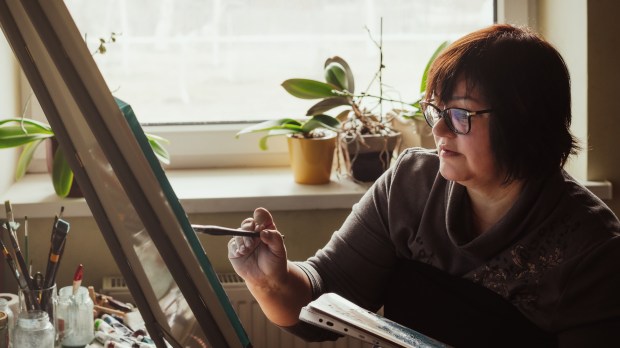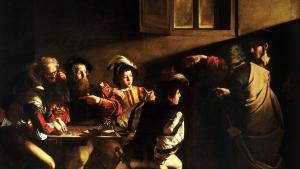I’ve always held in my mind a defined idea about who I am. A flight of fancy, if you will, that overtakes me but has little relation to who I am in reality. At its best, my idea of myself is a hope, a picture of who I want to be.
I aspire to be a wonderful, patient father who tells the corniest dad jokes, has time to coach all of my children’s sports teams, and whose knees never hurt so badly that he calls a halt to playing horse with the toddler.
I’d love to be the best husband in the world who always knows the right words to say, always does the dishes, and skips watching the football game to go apple-picking with no complaining.
I’d also love to be physically stronger and faster. It would be delightful to possess a more shapely nose. Reasonable hopes — which not all of mine are, clearly — are supremely helpful because they motivate us toward positive goals.
At its worst, the picture of who I am gets muddled and confused with reality, leaving me deluded. I think I’m better than I really am. Nicer, kinder, more generous. I look in the mirror and through whatever egotistical filter I’ve added to my ocular lens, I am literally convinced a more handsome face is looking back at me. This man in the reflection doesn’t have even a single gray hair in his beard. He thinks he’s 20 years younger than he actually is. I’m convinced that, if I were Sisyphus, that boulder would get carried up the hill and it would stay there.
It’s a strange human phenomenon, our inability to match our idea of self with reality. On the one hand, it causes us a lot of heartache. On the other, it creates initiative, desire, and sets us on a great adventure to make the reality true. We are creatures who dream and strive.
Among other goals, I’ve always wanted to be a painter. I actually applied to art school out of high school and was accepted, but ended up following a different path because I felt God calling me to become a pastor. The vocation I sensed back then was the beginning of a long, exciting, twisty road towards being ordained 15 years later as a Catholic priest. In the meantime, I served the Anglican church as a pastor for many years, got married, and had children. There was precious little time for art, so that dream faded. Occasionally, though, I still think about what it would be like to have time and space to improve as a painter.
This week, we celebrate the feast of St. Luke, who is rumored to have been a bit of an artist himself. In addition to authoring the Gospel according to St. Luke and the Acts of the Apostles, he’s said to be the artist responsible for an icon of the Blessed Virgin Mary. He’s a talented storyteller and as an artist has an eye for detail. Luke wasn’t one of the original apostles. In his Gospel he says his writing relies on eyewitness testimony, so it’s likely that he never actually met Jesus. And yet, his Gospel brings the idea of Christ to life, and his readers meet Jesus as a real person.
That’s the power of art, storytelling, and beauty. Art takes an idea we might have and embodies it, making the idea “real.” As Pope Benedict XVI says of the Christian faith, “Being Christian is not the result of an ethical choice or a lofty idea, but the encounter with an event, a person, which gives life a new horizon and a decisive direction.” At heart, the story he tells and picture he paints are about a real person. Luke understands this.
An artistic outlook has implications for how we interact with the people around us and how we shape our ideas about ourselves. We love others as real, flesh-and-blood people, as living, breathing works of art. They aren’t abstract ideas. Works of art are sometimes messy and complicated. They show the brush marks of the painter, present challenging perspectives, and in encountering the beauty that art incarnates the viewer is changed.
A work of art is beautiful for exactly what it is. It isn’t meant to be airbrushed into an idea or interpreted as a lecture. Its glory is its individuality, its uniqueness. A great work of art often surprises us. It cannot be created by formula. It is a transcendent reality, visible and tangible, a doorway into the mystery of how everything in this world strives for a higher, more beautiful existence.
Great art is an expression of hope. It’s the enfleshment of an idea, making a connection between the world as it is and the world as it ought to be.
Human beings are God’s masterpiece. We can’t expect other people or ourselves to exist in the realm of perfect ideas. We are far more like paintings — physical creations that bear the mark of our Creator. People are unexpected and unexplainable. Far more than an idea, we are children of God who hope and dream, and even if we’re far from perfect, He has made us beautiful.


